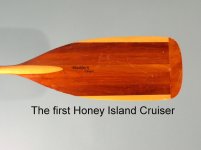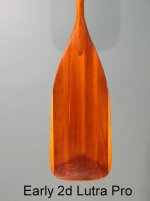G
Guest
Guest
I was blessed with a chance to try a Cricket 'Hemlock'/Honey Island Cruiser the other night. Holy F! I'm still thinking about it.
The dangerous part is I really, really want one. It goes against everything the modern canoeist say is right. It's a long stroke, but it requires little correction and dang can it make a Peregrine move! It knifes through the water and catches like nothing I've ever felt. It's absolute bliss. It's dead quiet if you paddle it right.
I tried it on calm water. I really want one. I really should try it in chop to see if I catch the top of waves... but I don't care... I'll learn how to adjust my stroke.
If you own a solo boat, best to stay away from this or you'll be ~300$ poorer or looking for something else that is even close.
The dangerous part is I really, really want one. It goes against everything the modern canoeist say is right. It's a long stroke, but it requires little correction and dang can it make a Peregrine move! It knifes through the water and catches like nothing I've ever felt. It's absolute bliss. It's dead quiet if you paddle it right.
I tried it on calm water. I really want one. I really should try it in chop to see if I catch the top of waves... but I don't care... I'll learn how to adjust my stroke.
If you own a solo boat, best to stay away from this or you'll be ~300$ poorer or looking for something else that is even close.
Last edited:



